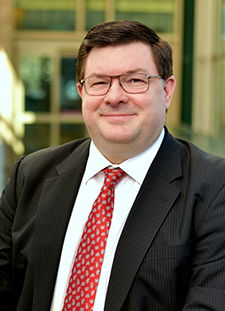How Common is Lung Cancer?

Dr. Galen Ohnmacht
By Dr. Galen Ohnmacht
When you think of common cancers, which ones come to mind? Breast? Prostate? Colon? Pancreatic? Lung cancer is actually the second most common cancer killer in men and women.
Lung cancer is responsible for an estimated 160,000 deaths in the United States annually. There are two major types: non-small cell lung cancer and small cell lung cancer, so named because of how the cells look under a microscope. Non-small cell lung cancer is more common. There are two main types of non-small cell lung cancer: squamous cell carcinoma, and adenocarcinoma. Adenocarcinoma is the most common type of lung cancer diagnosed in the United States. Small cell lung cancer usually grows more quickly and is more likely to spread to other organs in the body earlier.
Signs and Symptoms of lung cancer:
- A persistent cough that gets worse over time
- Constant chest pain
- Coughing up blood
- Shortness of breath, wheezing, or hoarseness
- Repeated pneumonia or bronchitis
- Swelling of the neck and face
- Loss of appetite or weight loss
- Fatigue
What Causes It?
Exposure to carcinogens (cancer causing agents) damages DNA in the cells of the body. The major cause of lung cancer is cigarette smoking. Other contributing factors include environmental or second-hand tobacco smoke, occupational exposure to carcinogens, and radon.
Who's Most At Risk?
Tobacco smoke is the biggest carcinogen, responsible for 85% of all lung cancers in the United States. Risk increases with the amount of tobacco used and the amount of time it has been used. Non-smokers exposed to tobacco smoke are also at risk of developing lung cancer. Other forms of tobacco use, such as cigar smoking and pipe smoking, are also associated with lung cancer. Other risk factors include:
- Family history
- Environmental and occupational exposure to certain substances, including arsenic, asbestos, chromium, cadmium, silica, nickel, and radon
- Exposure to radiation
- Lung diseases, including chronic obstructive pulmonary disease
- Poor diet
Treatment Options
Prevention
The best means of prevention is to never start smoking or chewing tobacco or to stop using tobacco products. A healthy diet is also an important part of prevention. If you do smoke, stop right now.
Detection and Screening
Some people who have smoked for more than twenty or thirty years or who are heavy smokers over age 55 may benefit from screening. This is especially true if they quit less than 15 years ago and are under age 78. If you or someone you know smokes or has smoked in the past, you should ask your doctor or provider if you should undergo screening for lung cancer. If you smoke, you should quit.
Treatment Plan
A treatment plan depends on the cell type, stage of disease, possibility for removing the tumor and the patient's ability to tolerate surgery, versus chemotherapy or radiation therapy.
Drug Therapies
Various therapies can treat lung cancer such as chemotherapy can control cancer growth and relieve symptoms. Immunotherapies which work with the body's immune system are also used for cancer therapy.
Surgical and Other Procedures
Surgery is often the best treatment for early and intermediate stage non-small cell lung cancer. Removal of a small part of the lung is called a segmental or wedge resection. Removal of an entire lobe of the lung is a lobectomy. Removal of an entire lung is a pneumonectomy.
Radiation therapy is used before surgery to shrink a tumor, or after surgery to destroy remaining cancer cells. Radiation therapy may also be used instead of surgery for those who can't undergo surgery, or it may be used to relieve symptoms such as pain.
Prognosis/Possible Complications
The outlook varies by cell type and stage of the disease. Early detection improves chances of survival.
Follow Up
Periodic follow up is useful to help to detect recurrence of the lung cancer or other smoking-related cancers. Frequent follow up and rehabilitation for loss of lung function from cancer, surgery or other treatment may be necessary. Above else, make sure you keep your scheduled appointments with your health care provider!
- Dr. Galen Ohnmacht is Chairman of the Division of Thoracic surgery and a thoracic surgeon at the UM Baltimore Washington Medical Center. He is a Clinical Associate Professor of Surgery at the University Of Maryland School Of Medicine. To reach Dr. Ohnmacht, please call 410-553-8150.
